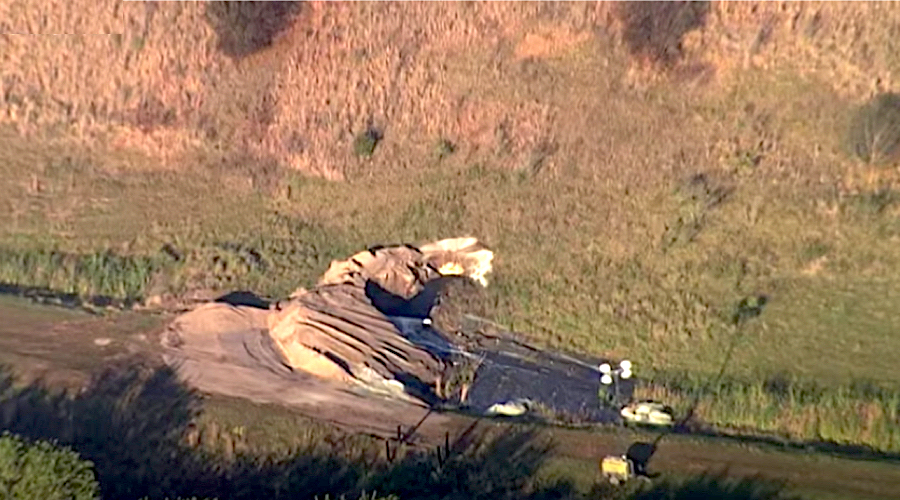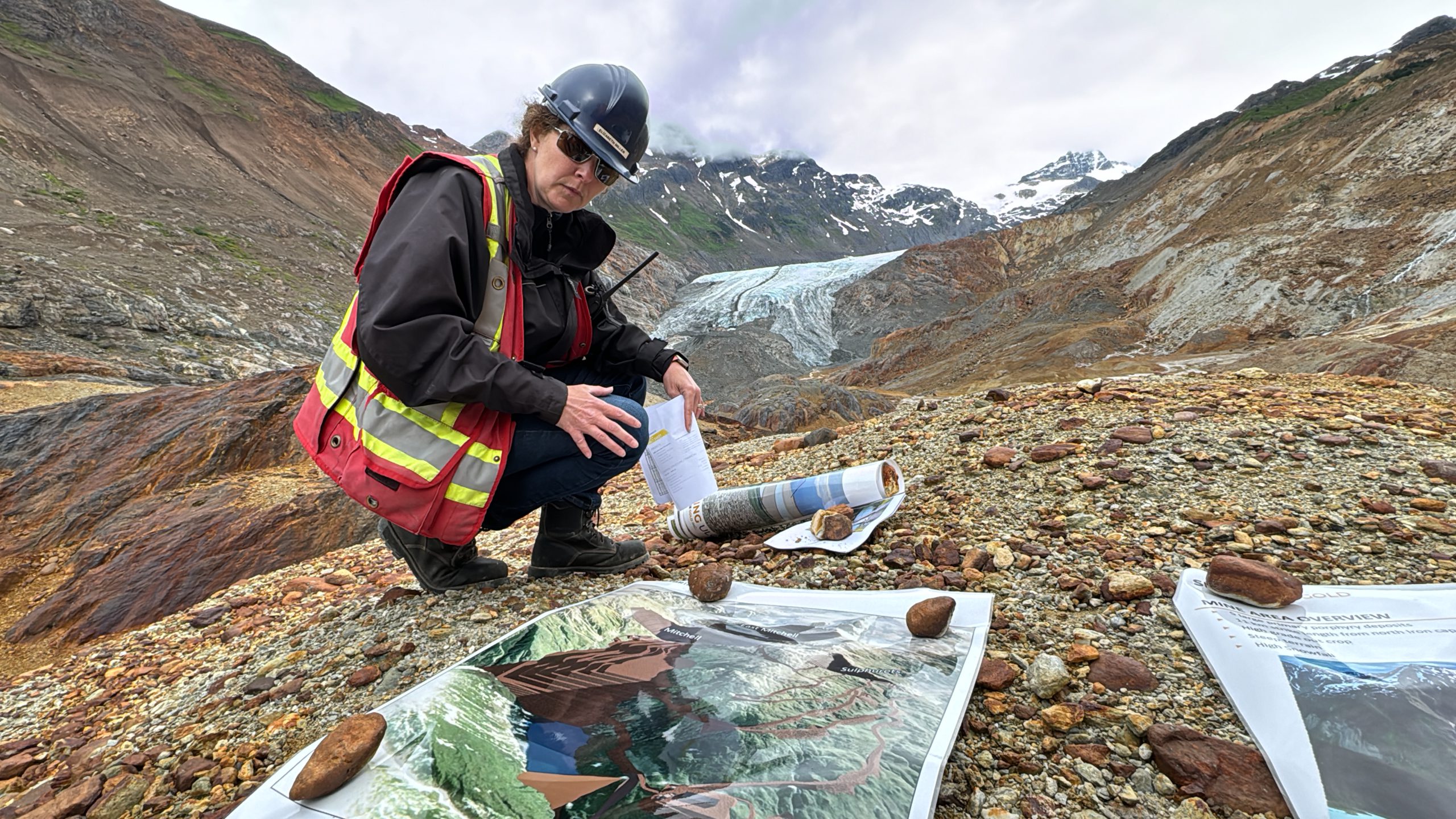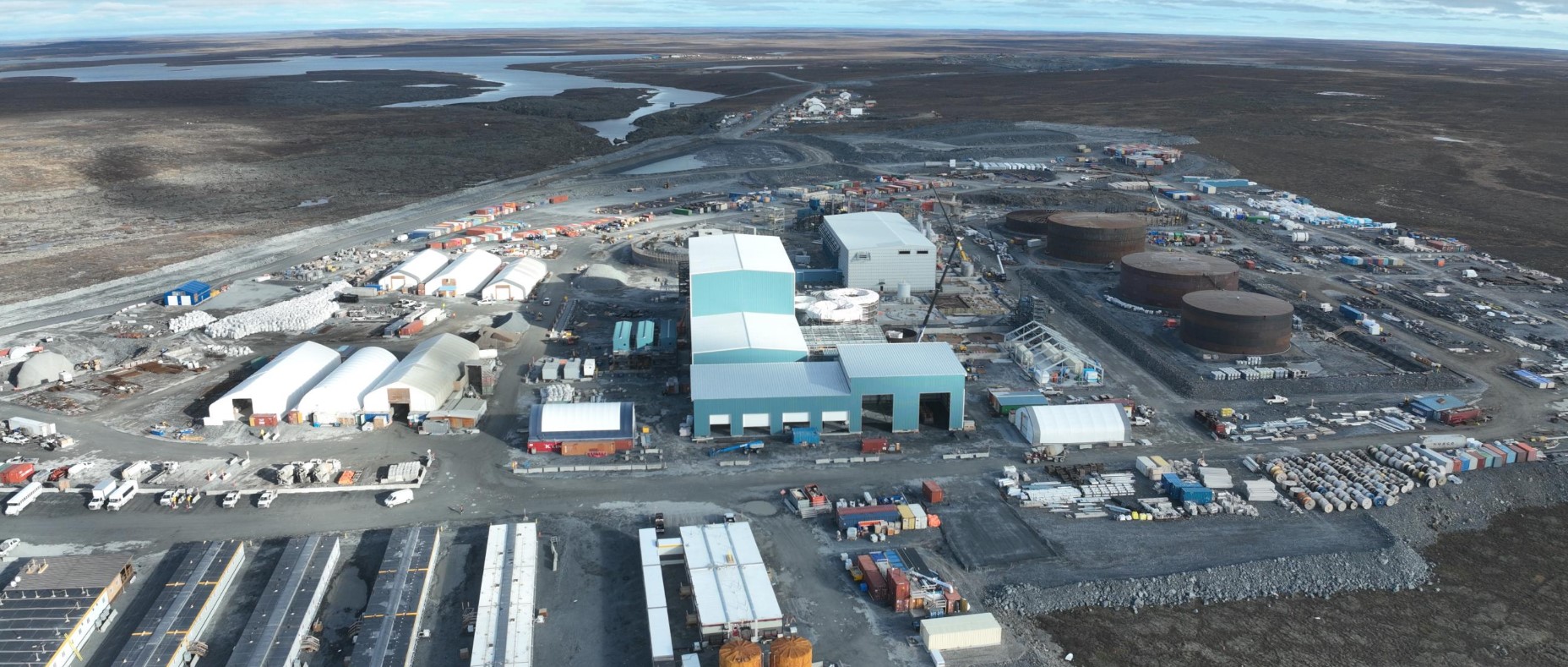Aerial images aired on local television showed water pouring from leaks in the walls of the retention pond.
A worst-case scenario could see a 20-foot wall of polluted water emerge from the leaking site, the Bradenton Herald reported. Although other models show one to five feet of flooding is more likely.
Ron DeSantis, the Florida governor, toured the scene by helicopter on Sunday and said at a press conference engineers were still attempting to plug breaches in the reservoir wall with rocks and other materials.
“What we’re looking at now is trying to prevent and respond to, if need be, a real catastrophic flood situation,” DeSantis said.
A local jail less than 2 km away from the 77-acre pond hasn’t been evacuated, but officials are moving people and staff to the second story and putting sandbags on the ground floor.
The Florida Department of Environmental Protection (DEP) says the water in the pond is primarily salt water mixed with wastewater and storm water, Associated Press reported.
The agency noted it could not rule out that a full breach could destabilize the walls of other ponds, some containing higher levels of toxic materials, at the Piney Point site.
“The radiologicals are still below surface water discharge standards. So, again this is not water we want to see leaving the site,” DEP Secretary Noah Valenstein said.
The pond at the abandoned phosphate mine sits in a stack of phosphogypsum, a radioactive waste product from fertiliser manufacturing. The pond contains small amounts of naturally occurring radium and uranium. The stacks can also release large concentrations of radon gas.
The owner of Piney Point, HRK Holdings, bought the site after it was abandoned by the Mulberry Corporation, which operated the phosphate plant for more than 40 years. As long ago as 2003, the Sarasota Herald Tribune reported, reservoir walls were crumbling.
The federal Environmental Protection Agency (EPA) previously authorized the dumping of hundreds of millions of gallons of toxic water into the Gulf of Mexico.
A global inquiry into mining waste storage systems of more than 700 resources companies, launched in April 2019 after the collapse of a dam in Brazil that killed hundreds, showed that about a tenth of the structures have had stability issues.
The research, led by the Church of England (CoE) and fund managers, reveals that at least 166 of 1,635 dams holding mining waste — tailings — have had safety issues in the past.
Currently there are no set of universal rules defining exactly what a tailings dam is, how to build one and how to care for it after it is decommissioned.
Some previous effort in that direction includes the World Mine Tailings Failures, an online database that aims at exposing the cause of tailing dams disasters, giving direction on how to prevent them.
There are about 3,500 tailings dams around the world.




